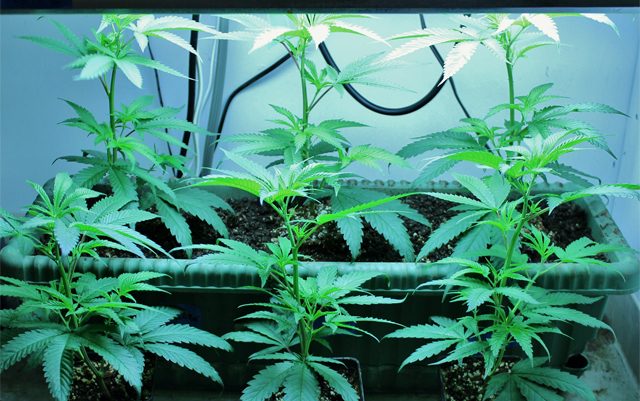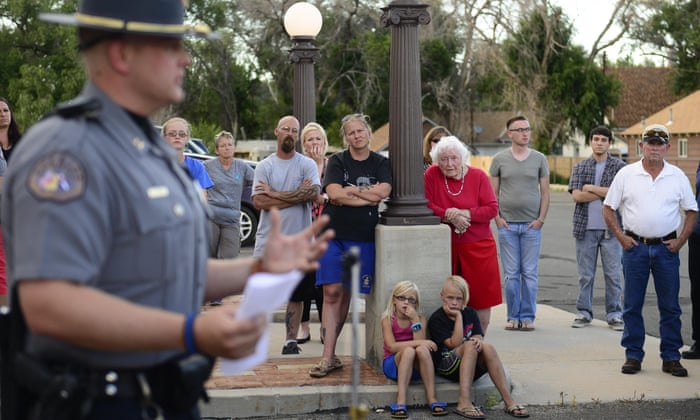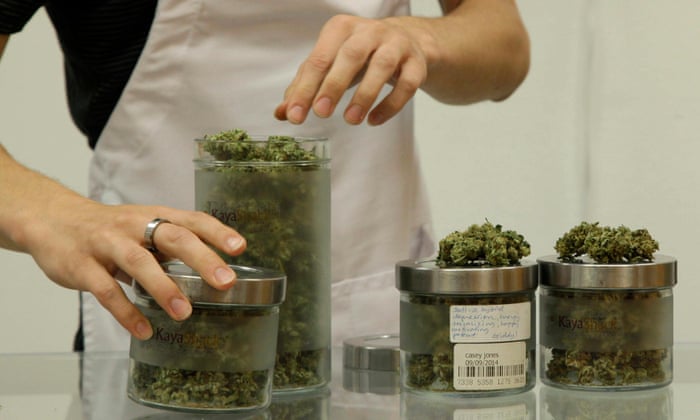Uruguay
was the first country in the world to fully legalize the production,
sale and use of marijuana, but the legal market has suffered growing
pains.
Uruguay announced
earlier this month that legal marijuana would soon be available for sale
at registered pharmacies, but only a small number have so far signed up
as many are fearful of violence and security issues associated with the
drug.
As of July, only 50 out of 1,200 pharmacies have registered to sell cannabis, according to The Cannabist. Many pharmacies are scared of robberies, are concerned about increasing costs and paperwork, and of disclosing their activities to other customers who do not agree with legal marijuana.
Some pharmacists feel they will become targets of violence as their pharmacy is taking away their profit margins. A Uruguayan government spokesperson said that so far no pharmacies have reported any threats to police.
Other reluctant pharmacists have said that they have not be explained enough about the drug in terms of its regulation and sale and do not want to sell as it would be medically unprofessional.
Since becoming the first country in the world to fully legalize
marijuana in 2013, Uruguay has taken a slow and cautious approach to
legalization in a bid to balance the interests of public health while
killing off illicit markets.
As well as distributing legal marijuana through registered pharmacies, legal growing clubs of up to 45 members can grow marijuana for personal consumption. Home growers also can grow up to six plants and harvest up to 480 grams per year.
There has been concern that cannabis clubs would open up grey markets for the drug, particularly with buying, selling and growing marijuana seeds. Legislation was changed after concerns were raised that buyers, home growers and growing clubs were reluctant to register their details on a government database to legally grow and purchase marijuana, forcing them to stay within the illicit market.
The price of pharmacy-sold marijuana has been set at around US$1 per gram to undercut the illicit market and lessen the prevalence of harmful and cheap Paraguayan marijuana and adulterated "paco" crack cocaine. For legal marijuana to be competitive, large amounts have to be grown to keep up with supply. Furthermore, there have been concerns that many will go to the black market to find strains and higher strength version of the plant that are not sold in pharmacies.
The reluctance of pharmacies to sell marijuana is a blow to Uruguayan reformers, whose key political challenge is to prove that their model can work, particularly amid a lack of domestic public support and external criticism from various international bodies that view legalization as a dangerous step away from international drug conventions. Neighboring Brazil and Argentina also have concerns that legal Uruguayan marijuana will be easily transported across their borders.
As of July, only 50 out of 1,200 pharmacies have registered to sell cannabis, according to The Cannabist. Many pharmacies are scared of robberies, are concerned about increasing costs and paperwork, and of disclosing their activities to other customers who do not agree with legal marijuana.
Some pharmacists feel they will become targets of violence as their pharmacy is taking away their profit margins. A Uruguayan government spokesperson said that so far no pharmacies have reported any threats to police.
Other reluctant pharmacists have said that they have not be explained enough about the drug in terms of its regulation and sale and do not want to sell as it would be medically unprofessional.
As well as distributing legal marijuana through registered pharmacies, legal growing clubs of up to 45 members can grow marijuana for personal consumption. Home growers also can grow up to six plants and harvest up to 480 grams per year.
There has been concern that cannabis clubs would open up grey markets for the drug, particularly with buying, selling and growing marijuana seeds. Legislation was changed after concerns were raised that buyers, home growers and growing clubs were reluctant to register their details on a government database to legally grow and purchase marijuana, forcing them to stay within the illicit market.
The price of pharmacy-sold marijuana has been set at around US$1 per gram to undercut the illicit market and lessen the prevalence of harmful and cheap Paraguayan marijuana and adulterated "paco" crack cocaine. For legal marijuana to be competitive, large amounts have to be grown to keep up with supply. Furthermore, there have been concerns that many will go to the black market to find strains and higher strength version of the plant that are not sold in pharmacies.
The reluctance of pharmacies to sell marijuana is a blow to Uruguayan reformers, whose key political challenge is to prove that their model can work, particularly amid a lack of domestic public support and external criticism from various international bodies that view legalization as a dangerous step away from international drug conventions. Neighboring Brazil and Argentina also have concerns that legal Uruguayan marijuana will be easily transported across their borders.


















